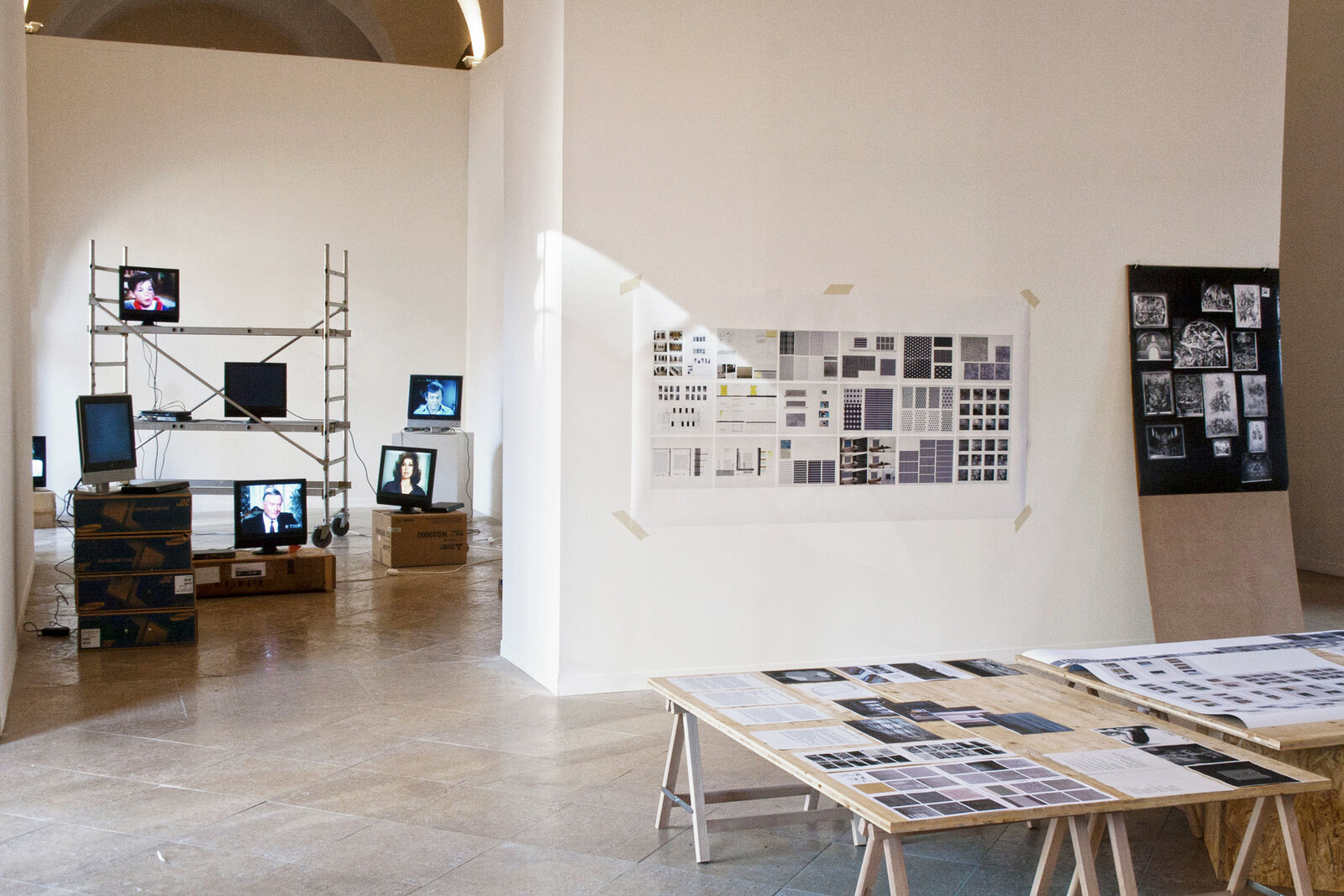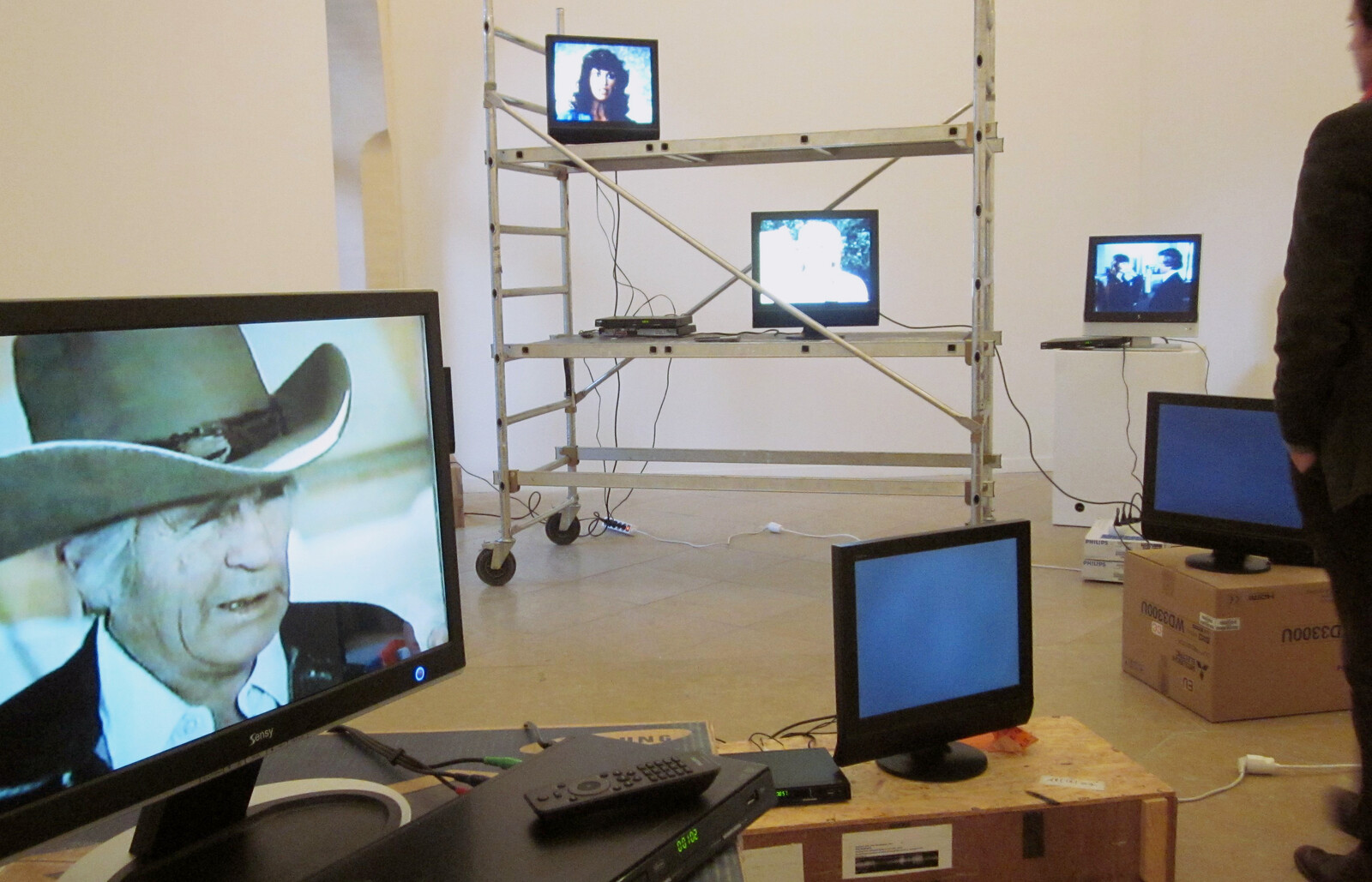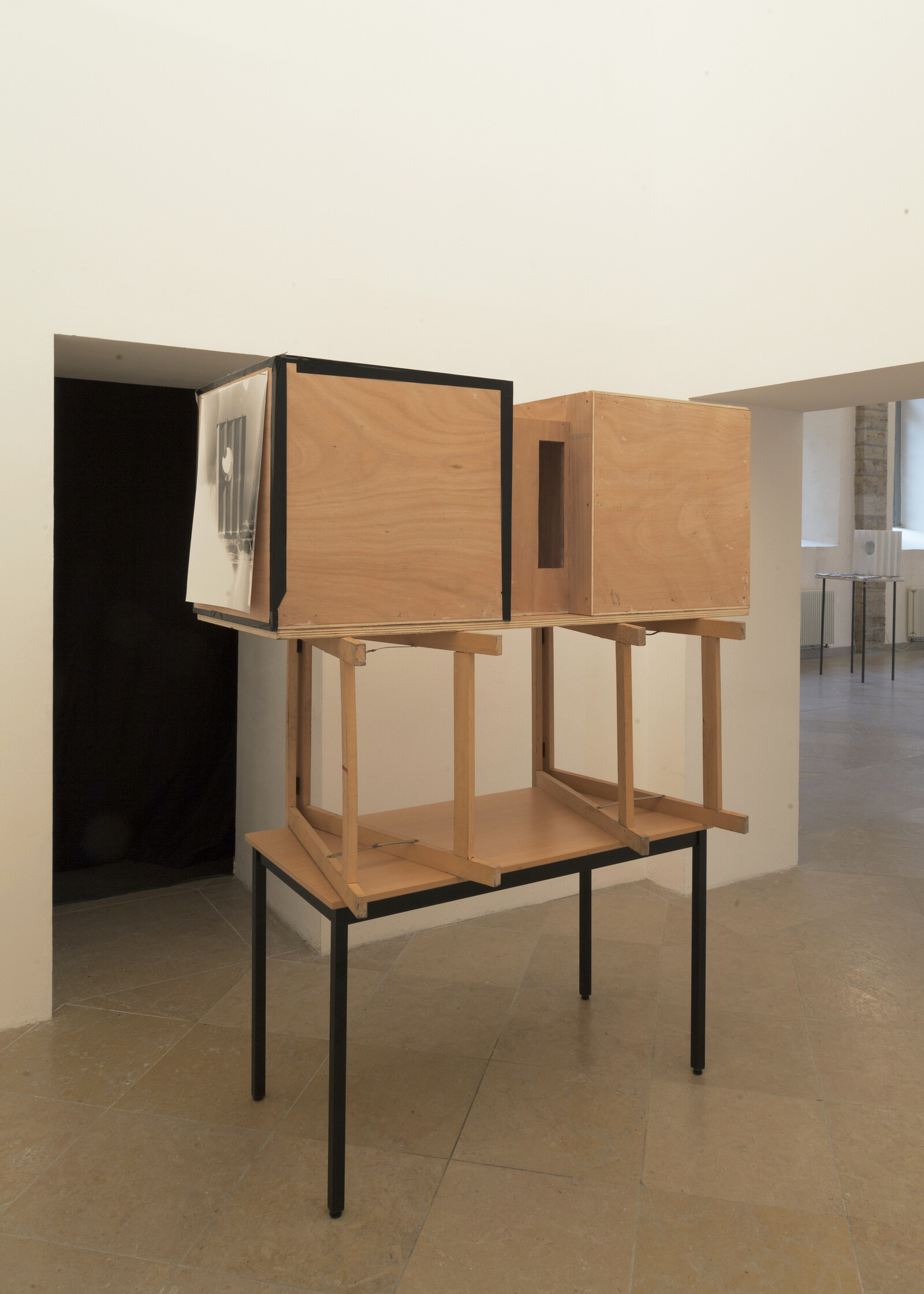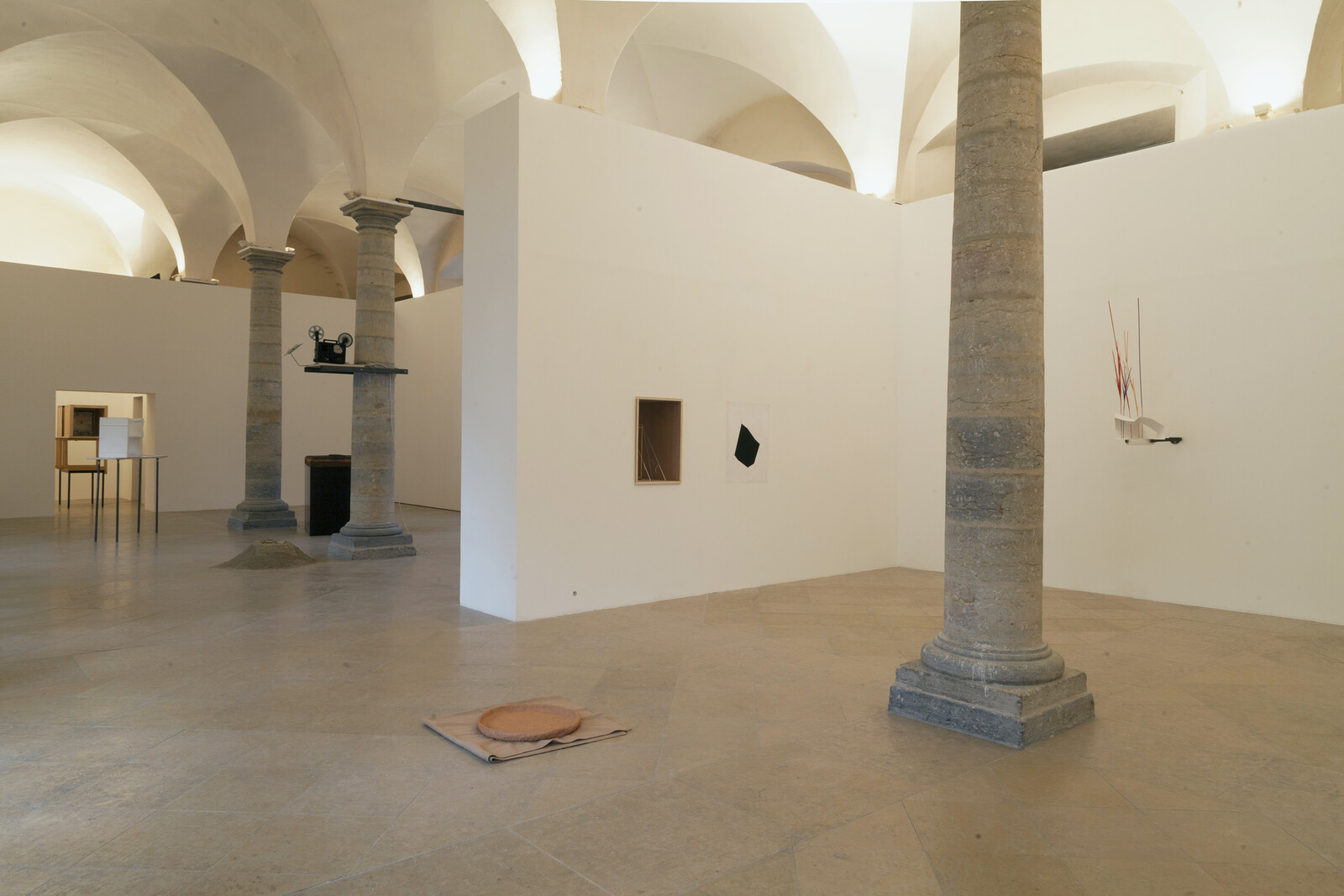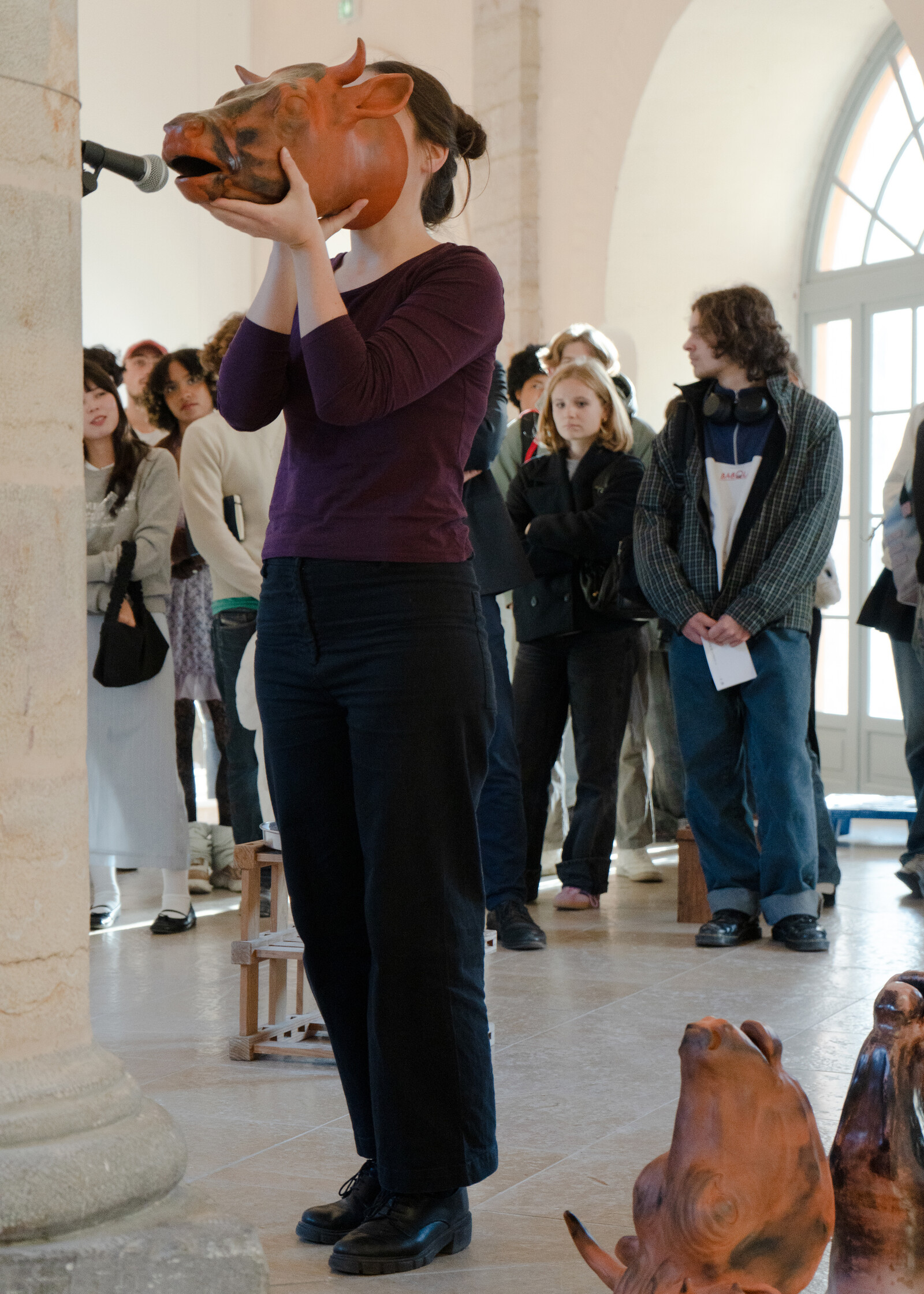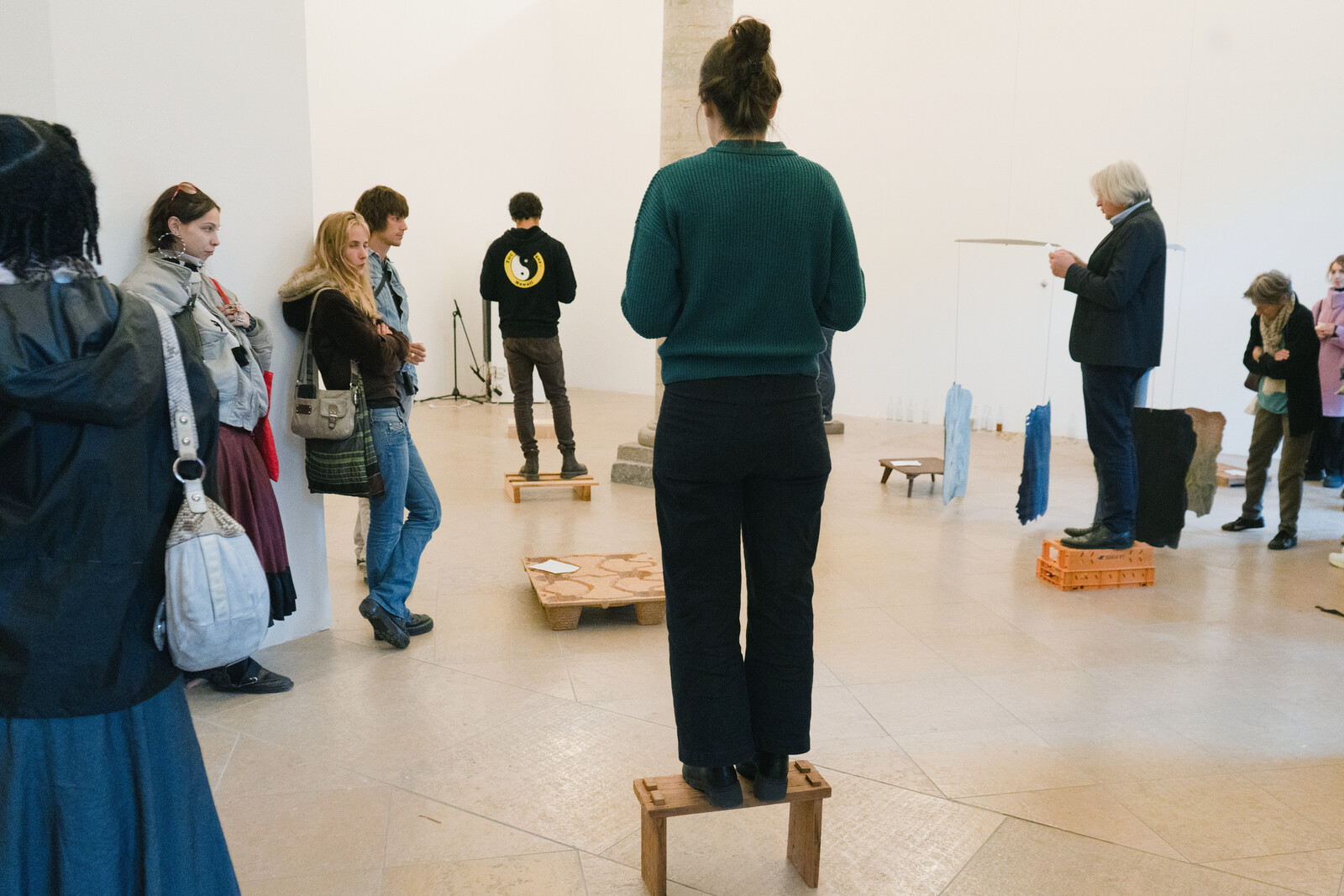http://www.ensba-lyon.fr
On April 4, 2023, members of the Contemporary Art and Temporalities of History research unit (ACTH) met for dinner. The meal began with Anna Holveck’s performance “And If That Mocking Bird Don’t Sing” (2023), in which she improvised vocal melodies over multichannel field recordings of children’s lullabies. Immediately afterward, guests were encouraged to don bird masks and enjoy a light apéritif of dried insects and birdseed as Jennifer Lauro-Mariani led a group reading of Artistophanes’s satirical comedy The Birds. Dinner culminated in a unique main course proposed by recent ACTH member Jules Maillot: a bold attempt at the fabled rôti sans pareil (roast without equal), a perversely quixotic recipe first dreamed up by Alexandre-Balthazar-Laurent Grimond de la Reynière in his 1807 L’almanach des gourmands that calls for seventeen (!) different game birds stuffed one inside the other like nesting dolls and slow-cooked for 24 hours. (The group settled for a slimmer ten-bird variation due to the fact that several birds in the original recipe are now endangered or illegal to procure). Finally, one of the evening’s invited guests, the actor and “zoomorphic performer” Cyril Casmèze, gave a brief lecture on the art of mimicking animal behavior, before spontaneously transforming himself into a bear and then a wild boar. For dessert, figs stuffed with chocolate and dried fruit were suspended from strings and eaten without the use of the guests’ hands.
The dinner was the second of three performative “banquets” organized by the ACTH between 2022 and 2024. Like many of the group’s activities, the loosely-prescribed themes and agenda of these happenings were designed to spark impromptu dialogue among the attending artists, theorists, playwrights, and researchers. One banquet’s discoveries might then serve as the foundation for the group’s next undertaking.
Founded in 2004 by artist Bernhard Rüdiger and art historian Giovanni Careri, and since helmed by Rüdiger under the auspices of the École nationale supérieure des beaux-arts (ENSBA) in Lyon, the ACTH is a post-graduate program open to artists and researchers working in any discipline. It is organized around monthly seminars, a summer program in Kosovo co-hosted by Stacion—Center for Contemporary Art Prishtina, and a variety of collaborative projects: conferences led by visiting lecturers, collaborative exhibitions, and the publication of books of art and theory.
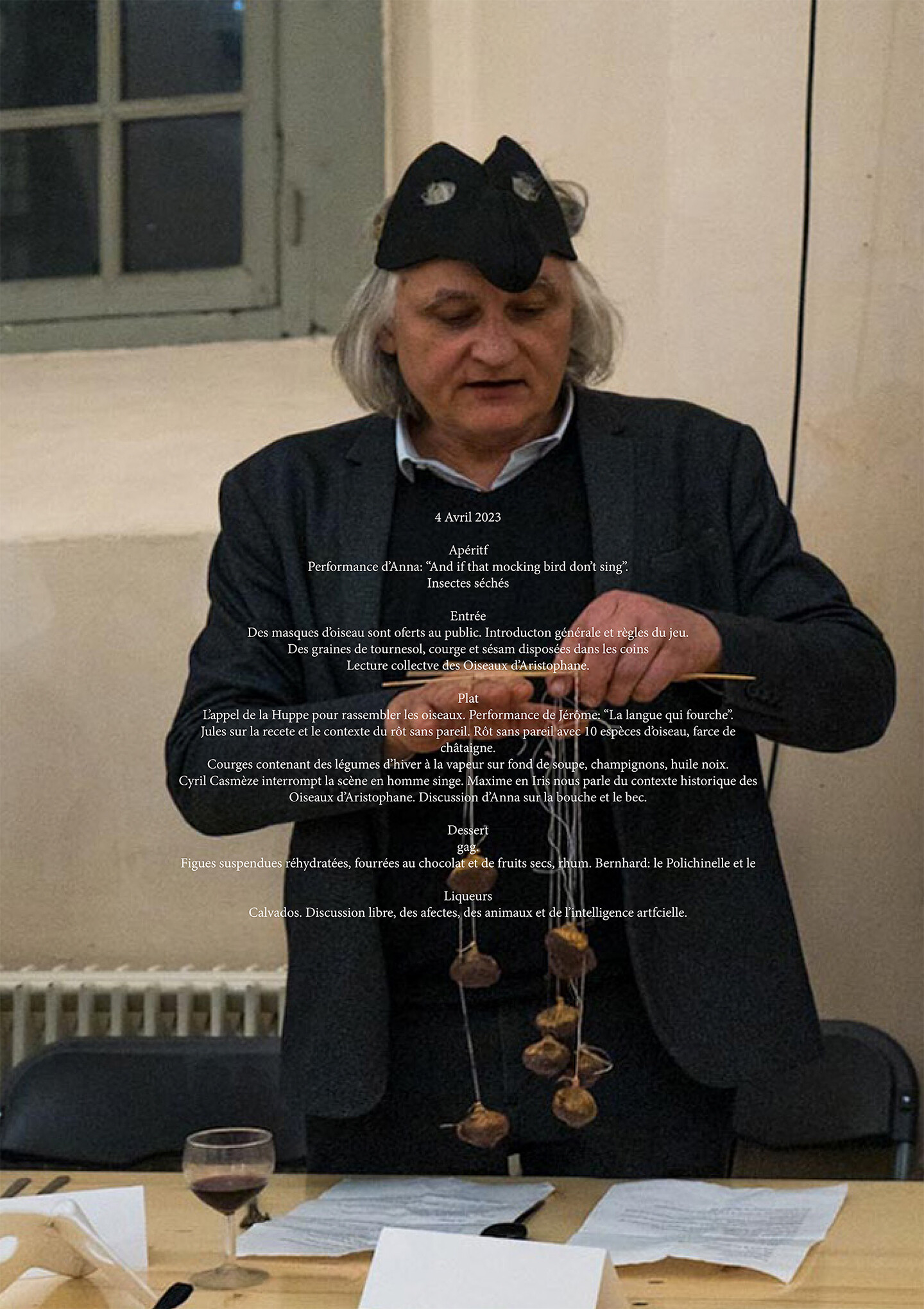

A menu for the banquet held by ACTH members on April 4, 2023. Pictured: artist and ACTH founder Bernhard Rüdiger. Courtesy of Yann Annicchiarico.
Despite a rigorous application process—in addition to the standard portfolio and personal statement, candidates must submit an extensive proposal of their intended research trajectory— the parameters of the program are somewhat nebulous, focused more on group work and discussion than on the defense of individual projects. During our conversations, the artists and researchers currently enrolled in the ACTH made little distinction between “students” and “advisors,” opting to refer to both director and candidates using the more egalitarian “members.” Rather than a PhD, they pursue a three-year Diplôme supérieur de recherche en art, an accreditation recognized exclusively by the French Ministry of Culture.
Once admitted to the research unit, members craft and mount a defense of a thesis, which has no prescribed time limit and need not include a written component. Rather than pressure members to ground their research within the confines of a discrete project and deadline, the ACTH serves to accompany the artistic and academic careers of its participants, serving as a testing ground for ideas and, above all, as an active conversation that grows and adapts over time. In fact, everything about the ACTH’s activities—from an endless string of interconnected seminars and conferences modeled after Hans-Georg Gadamer’s theories of interlocution, to the group’s elaborate collaborative collages of visual reference materials inspired by the atlas projects of Aby Warburg and Gerhard Richter—is designed to slow down the acts of looking at, thinking through, and producing works of art.
Once they’ve successfully defended their theses, members of the ACTH are under no obligation to “graduate” from the program. Lauro-Mariani, a theater director and playwright based in Marseilles, joined the research unit in 2006 and is still an active member. “I joined when I was a student, now I am a teacher,” says Lauro-Mariani. “What is important for me is the theoretical and practical space that we share. I can try things with the group that I can bring back to my practice in the theater.”
With no formal curriculum, the research unit’s theoretical concerns revolve around whatever ideas come up organically in discussion. During the ACTH’s first year in 2004, the “problematic” du jour for then-members was a cluster of ethical questions surrounding representation of “the real,” particularly within the mediums of photography and documentary film. Central to this discussion was the public debate in 1998 between filmmakers Claude Lanzmann and Jean-Luc Godard about the hypothetical existence of footage depicting the use of gas chambers during the Holocaust. (While Godard pressed the importance of such a film, Lanzmann, who famously forwent the use of archival footage in his 1985 opus of recorded oral history Shoah, retorted that had he come across any such footage he would have immediately destroyed it.) This inquiry inaugurated the first “phase” of ACTH’s programming, later dubbed “La construction du réel” (The construction of reality) and formalized with the 2008 publication of the book Face au réel: Éthique de la forme dans l’art contemporain (Facing reality: Ethics of form in contemporary art). Between 2004 and 2007, the ACTH hosted a series of seminars and workshops led by guests including philosopher Georges Didi-Huberman, cultural theorist Mieke Bal, and artists Thomas Schütte and Luciano Fabro. Of all these, however, it was perhaps American artist Allan Sekula’s visit, and his work’s tenacious prodding and detangling of sociopolitical contexts, that would prove most formative for the ACTH in the years to follow.


Spreads from Face au réel: Éthique de la forme dans l’art contemporain (Facing reality: Ethics of form in contemporary art), 2008. Co-edited by l’École nationale des beaux-arts de Lyon and Archibooks. Courtesy of l’École nationale des beaux-arts de Lyon.
When he visited Lyon on November 3, 2005, Sekula was editing The Lottery of the Sea (2006), an essay film on globalization and maritime labor shot between ports in the Netherlands, Greece, Japan, and the United States. During his seminar, Sekula broke the film down, sharing the unfinished work within his editing software as he dissected and explained the ethical and aesthetic pressures behind each cut and frame. Later, Sekula and writer and historian Henri-Alexis Baatsch led the ACTH members on a tour of two local hills in Lyon. First was the Croix-Rousse, historical home and workplace of the canuts, the Lyonnais silk workers who led one of the first worker uprisings of the Industrial Revolution in 1831. Subsequently, the group visited the Fourvière in the west, the site of the original Roman settlement of Lugdunum in 43 BC and the Catholic Basilica of Fourvière. Pairing the tour with a series of readings by the eighteenth-century utopian socialist philosopher François Marie Charles Fourier, they stripped back the layers of social upheaval and political struggle underpinning the architecture and geography of the group’s own context in Lyon.
This forensic ethos would inform the group’s first two collaborative exhibitions, 2011’s Le temps suspendu (Time suspended) and 2016’s Le temps découpé en son lieu (Cutting out time in its place), both staged at the Réfectoire des nonnes, the principal exhibition space at ENSBA, Lyon. For the Le temps suspendu, the ACTH curated works by Candice Breitz, Sharon Lockhart, and Michael Snow in dialogue with works by research unit members Rüdiger and Thomas Léon. The exhibition was then subjected to a unique conceit: it remained closed to the public for its duration, during which time the members of the research unit held a series of discussions amongst themselves inside the exhibition hall. They collected and shared visual reference materials related to the members’ individual art and research practices, as well as to the exhibition itself, which were then organized into a series of collage-like “atlases” arranged on makeshift display tables set up amidst the artworks in the exhibition. The members also carried out a series of interventions upon the works installed in the show. The artist Yann Annicchiarico, for example, drilled a small hole through the wall on which Sharon Lockhart’s Lunch Break (2008) was being projected, causing the image to be re-projected into a miniature “cinema for flies” installed on the other side. On the evening of December 14, 2011, Le temps suspendu, complete with the atlases and interventions made over the previous three weeks by the members of the ACTH, was finally opened to the public for its single closing night.
The group pushed their collaging of visual references a step further with 2016’s Le temps découpé en son lieu, an exhibition consisting of models and maquettes based on existing works addressing loose themes of deep time, excavation, and topology. These included replicas of Gordon Matta-Clark’s Conical Intersect (1975)—originally made at the site of the Centre Georges Pompidou in Paris—Jay Defeo’s The Rose (1958–66), and Pierre Huyghe’s 2012 installation for the roof of the New York’s Metropolitan Museum of Art. The models, made collaboratively by ACTH members, either rendered these prior artworks faithfully in miniature or recast them in a playful new light. A shrunken reconstruction of DeFeo’s opus painting The Rose on display in her Fillmore Street studio, for example, was presented inside a working camera obscura that projected images of the surrounding exhibition space onto its interior wall.
After the research unit’s three recent banquets, a conversation regarding consumption, comedy, and animal consciousness led to the conceptualization of Des portes là où il n’y en a pas (Doors where there are none), a group exhibition that opened in September 2024. Prior to this, ACTH member Michala Julínyová had primarily made films that focused on the landscape and history of her home of Slovakia. For this exhibition, however, she prepared a complex new performance work. For Souvenir des troupeaux (Remembering the herds) (2024), Julínyová recorded and looped her own voice while singing a traditional Slovakian love song into several ornate, hand-sculpted ceramic cow heads that she modeled after antique rhyton vessels used in ancient libation ceremonies. The performance concluded with a series of prerecorded testimonials from Slovakian farmers speaking about animals they lost during the country’s forced collectivization during the 1950s.
If the work sounds dense, multivalent and almost gleefully unconcerned with immediate legibility, it’s all in keeping with the ACTH’s topographical approach to research-as-art. Each new result of the group’s slow, discursive meaning-making has been built upon layers of inextricable context that the group itself has created over the last twenty years. Turning inward and taking their time, the members of ACTH eschew the more stifling demands of both academia and the art market in the hopes of discovering new avenues of thought and practice.
“I’m still doing films,” says Julínyová. “That will always be a part of my work. But I think the performance was a means for me to displace, to do something here in France, in a different context, with people from different backgrounds, to open up my work.”
